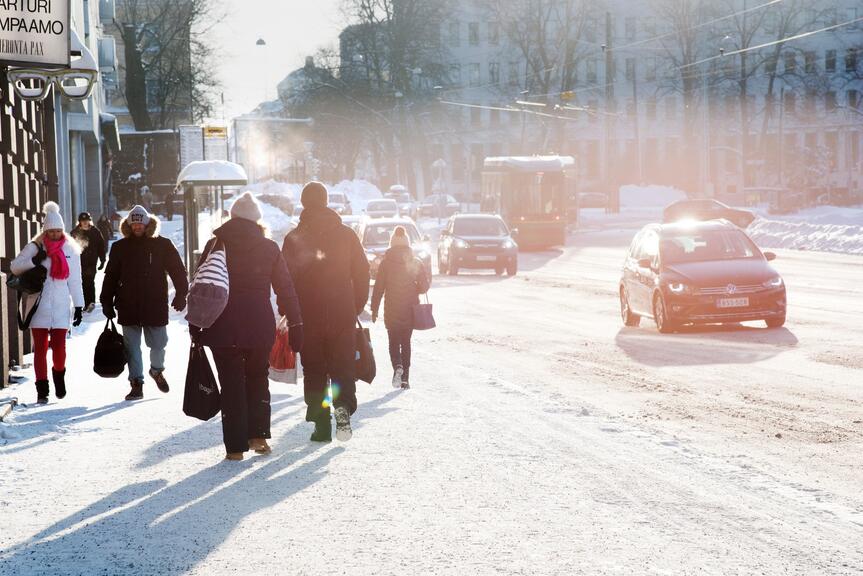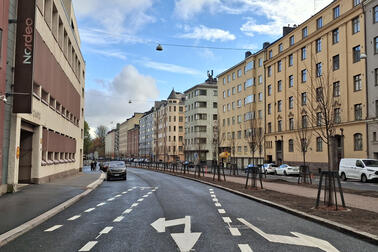
Street dust remains a significant problem for air quality. Recognising this, the City of Helsinki’s friction tyre communication campaign supports the City’s target of increasing the proportion of friction tyres in local winter traffic from 35% to 70% by winter 2030–2031. In recent years, exhaust emissions from traffic have decreased thanks to the development of vehicle technology and air protection measures, but the street dust raised up by traffic remains a significant air quality problem.
The main cause of street dust in cities are studded tyres: as much as half of the street dust comes from street surfaces ground by studded tyres. The days with the most dust occur in the spring, but there are such days at other times in the winter tyre season when the street surfaces are dry. By choosing friction tyres, you can help reduce the generation of street dust. In addition to improving air quality, friction tyres also cause less noise and less wear on the streets than studded tyres.
As part of this year's communication campaign, we interviewed four Helsinki Metropolitan Area residents about their experiences with friction tyres. Their responses highlighted the driving comfort and quietness of friction tyres and the importance of an anticipatory driving style and environmental aspects.
“Environmental issues are important to me – we use an electric car, for example. I know a bit about the environmental benefits of friction tyres – they reduce dust and noise pollution because they are quieter. They also cause less wear on the road surface,” summarises Tiina, a project manager from Vantaa, who uses a car on a weekly basis to drive her daughter to football practice, for example.
Check out videos on friction tyres on the official campaign website at www.hel.fi/kitkat and be sure to follow the City of Helsinki Urban Environment Division’s social media channels in October.
Safe and anticipatory driving is more important than tyre type
While studded tyres do provide better hold on an icy road, icy conditions are much rarer in the Helsinki region than in the rest of Finland. In Helsinki, street surfaces are also prevented from freezing with effective anti-skid treatment based on de-icing salt.
In terms of traffic safety, driving style matters more than the tyre type. An anticipatory and proactive driving style increases safety and is especially important in challenging winter conditions. Especially if the car also has anti-lock brakes and a stability control system, friction tyres are excellent for winter driving.
“I switched to an electric car this spring that is much heavier than my previous car. This has made anticipatory driving even more important, as the car does not stop as fast. Drivers using friction tyres have their own distinct driving style – it is more anticipatory, and we maintain a distance from other drivers,” says Kati, a taxi driver for Taksi Helsinki, who has been using friction tyres throughout her whole career since 2005.
Environmentally friendlier tyres are promoted both nationally and locally
Raising awareness of the best tyre options for air quality and safety has been recorded in the National Air Pollution Control Programme approved by the Finnish Government. The objective of increasing the use of friction tyres is also included in the City of Helsinki’s Air Quality Plan and Noise Abatement Action Plan.
To promote the objective, Helsinki is also currently testing a ban on studded tyres on Lönnrotinkatu. The City of Helsinki’s friction tyre communication campaign is carried out in cooperation with the Cities of Espoo, Kauniainen and Vantaa, the Helsinki Region Environmental Services Authority (HSY) and the Ministry of the Environment.


